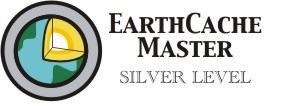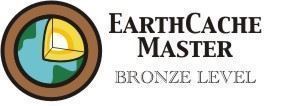This is our 1st EarthCache Hide & it’s at a City Park in Lake Alfred at Lake Swoope (The Twin Lakes). Lake Alfred was Incorporated in 1915 & is 10sq. Miles with a population of 4,517. It’s a quaint little place.

There is no physical cache at this location, you must complete the requirements listed below. This is a learning type cache about our environment, storm water runoff (pollutants), vegetation, etc. So as always treat the park, wild life, people, vegetation, etc. w/respect & always remember to CITO! Thanks.
Roads, driveways, parking lots & buildings are impervious areas. When it rains, the rain water can’t soak into the ground below these areas, so it flows off becoming stormwater runoff.
As the rainfall flows across impervious areas it picks up pollutants, such as oils, greases, litter, leaves, fertilizers & pesticides. This runoff, if not treated, can carry these pollutants to our streams, lakes, & wetlands. Stormwater runoff has been identified as one of the major sources of pollution in the United States.
One effective way to clean up stormwater runoff before it pollutes our lakes, wetlands & streams, is to direct the runoff through stormwater ponds. These ponds can provide both food protection & water quality improvements. Pollutants may either settle out or be taken up by the plants in the ponds before flowing into our streams, lakes & wetlands.

Wetlands help with flood control by soaking up stormwater runoff and slowing down stream flow. Wetlands trap sediments that are washed off land or carried in streams. Wetland plants and soils also absorb pollutants such as fertilizer and toxic material, thereby helping with water purification.
Lake Swoope and wetlands also provide refuge and habitat for animals and plants, some of which are very rare. For humans, wetlands provide a wonderful outdoor classroom, offering such opportunities as bird watching, photography, and nature walks. The wetlands provide a welcome refuge away from the hustle and bustle of the city.
Native aquatic plant communities provide oxygen, food and shelter for fish and other wildlife. These plants help prevent soil erosion and help clean our water by filtering out some of the pollution.

A natural diversity of these plants is important to having a healthy lake, pond, stream or wetland. Aquatic plants growing around the shoreline of this wetland include Giant Bulrush, Soft-Stem Bulrush, Spatterdock, Eel Grass, Lance-Leaf Arrowhead, Golden Canna, Pickerelweed and Bald Cypress trees.
Lake Swoope and wetlands also provide visitors with an opportunity to see and enjoy a variety of wildlife, including Sandhill Cranes, Softshelled Turtles, Moorhens, Great Egret, Great Blue Heron, Marsh Rabbits, Snakes and Alligators.
So as anybody can see how this is great for our environment (& the aquifer). This whole process not only keeps our lakes, wetlands, streams, aquifer & air clean but it also brings & gives homes & food to various wild life & humans to live a happy & healthy life.
Sources: Lakes Education/Action Dr. (LEAD) & The Peace River Basin Board of SWFWMD
To claim credit for this EarthCache email your answers to questions 3 & 4 to the email address on our profile, post the picture when logging your find. Please DO NOT post your answers for questions 3 & 4 in your log, even if encrypted.
.1) Take a photo of yourself and GPS at your favorite spot within the park. If you are by yourself, a hand held GPS picture is OK. Post the photo when you log this EarthCache. (optional)
.2) You will need to purchase a small water test kit (or click here for 'GC29K5H pH strips Reference Point' or see below) & provide us with the pH level of the water at the time of your visit & post w/your log, (the reason we are having you post this answer is so everybody can compare the results).
.3) Bring some type of clear container with a lid & take a water sample. Next, wait 2-3 days to let the water settle in the container & explain in your own words, what type of sediment was found in the water. (The sample can be measured from clear to very cloudy, based on the amount of rain we have had recently, the more rain, the more the lake bottom will be disturbed and the more sediment you would collect in the sample). E-mail us your answer.
.4) Explain in your own words, how does the Stormwater Management work to filter out harmful chemicals from the surrounding area and keep it out of our wetlands, lakes & streams to help our environment? E-mail us your answer.
IMPORTANT NOTE: Take the pH sample & the water sample to settle, at the boat ramp (posted coords.). E-MAIL US ALL OF THE ANSWERS AT ONE TIME, PLEASE!
Special thanks goes out to “FSUDad, A Platinum EarthCache Master” for helping us meet the criteria for getting this EarthCache published………..Thanks “FSUDad“!!!
**CONGRATS. and THANKS to "WH Girl Scout" for the FTF, and to everybody who has found it and who will.**
AWESOME!



This cache was placed by a member of the:
